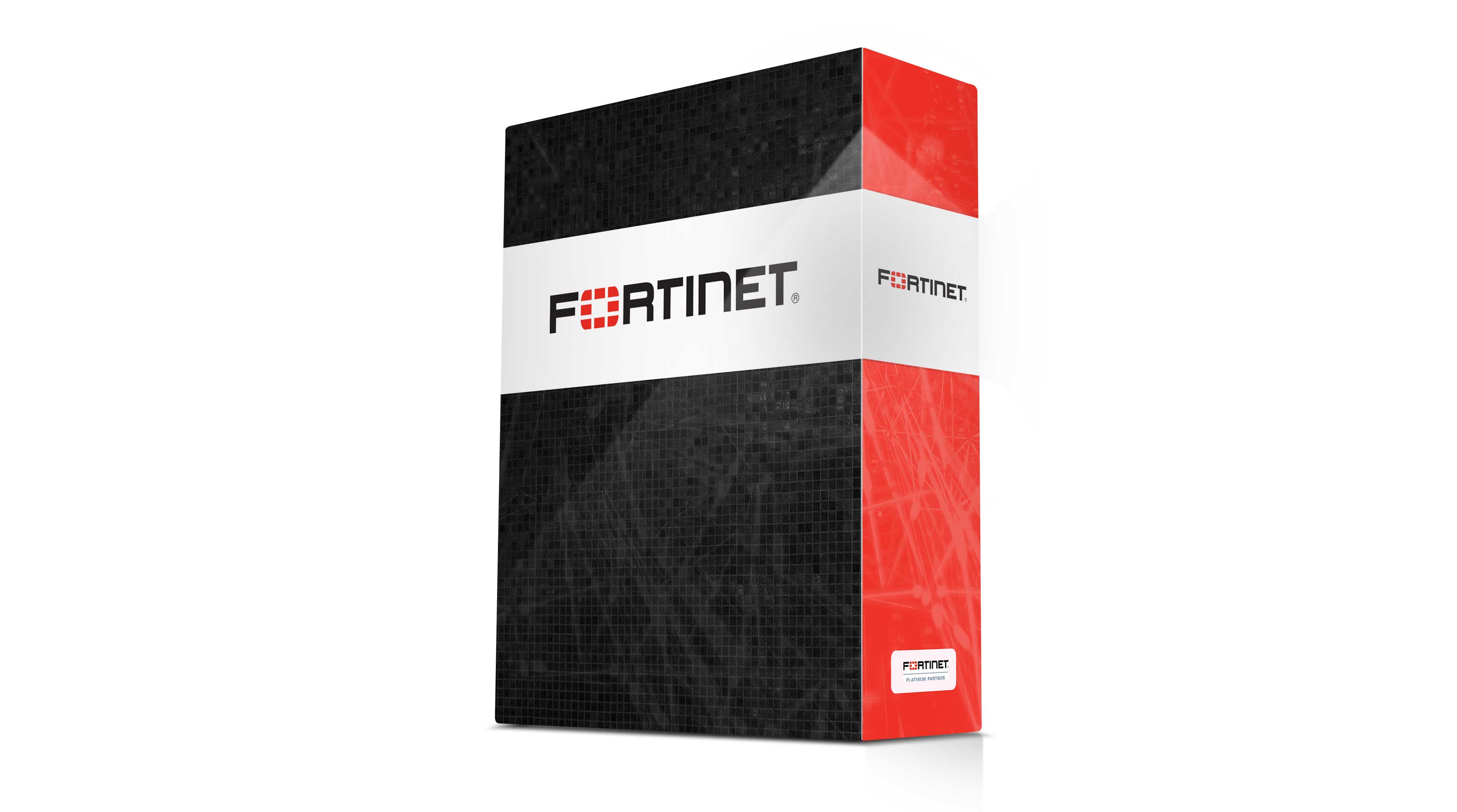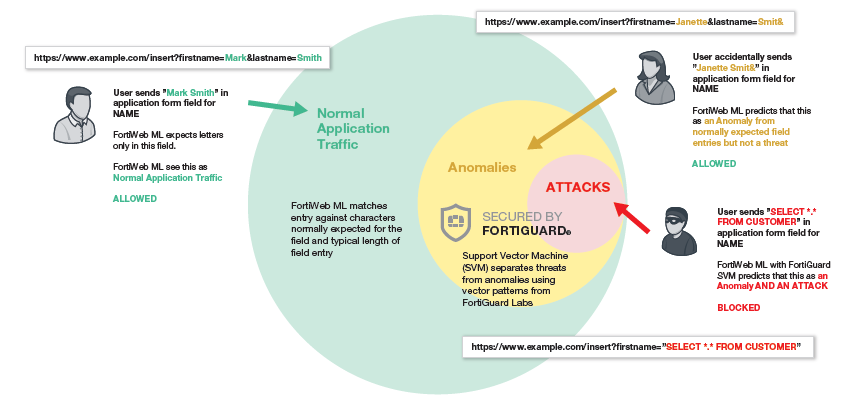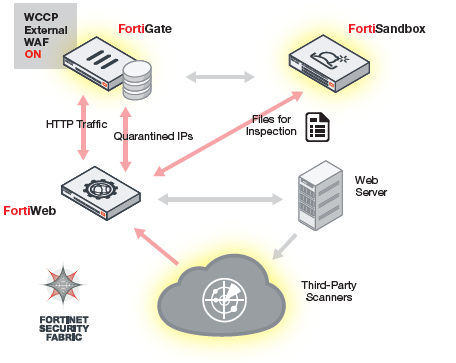
Fortinet FortiWeb VM16

Web Application Firewall - virtual appliance for all supported platforms. Supports up to 16 x vCPU core
Click here to jump to more pricing!
Overview:
Web Application and API Protection
FortiWeb is a web application firewall (WAF) that protects web applications and APIs from attacks that target known and unknown exploits and helps maintain compliance with regulations.
Using machine learning to model each application, FortiWeb defends applications from known vulnerabilities and from zero-day threats. High performance physical, virtual appliances and containers deploy on-site or in the public cloud to serve any size of the organization — from small businesses to service providers, carriers, and large enterprises.

Web Application Protection
Multi layer protection against the OWASP Top 10 application attacks including machine learning to defend against known and unknown attacks.
API Protection
Protect your APIs from malicious actors by automatically enforcing positive and negative security policies. Seamlessly integrate API security into your CI/CD pipeline.
Bot Mitigation
Protect websites, mobile applications, and APIs from automated attacks with advanced bot mitigation that accurately differentiates between good bot traffic and malicious bots. FortiWeb Bot Mitigation provides the visibility and control you need without slowing down your users with unnecessary captchas or challenges.
Highlights:
- Machine learning that detects and blocks threats while minimizing false positives
- Advanced Bot Mitigation effectively protect web assets without imposing friction on legitimate users
- Protection for APIs, including those used to support mobile applications
- Enhanced protection with Fortinet Security Fabric integration
- Visual analytics tools for advanced threat insights
- Third-party integration and virtual patching
- FortiCare Worldwide 24/7 Support
- FortiGuard Security Services

Pricing Notes:
- Hardware plus FortiCare Premium and FortiWeb Standard Bundle
Hardware Unit, Advanced Hardware Replacement (NBD), Firmware and General Upgrades, FortiCare Premium Ticket Handling, Antivirus, FortiWeb Application Security Service, & IP Reputation Service - Hardware plus FortiCare Premium and FortiWeb Advanced Bundle
Hardware Unit, Advanced Hardware Replacement (NBD), Firmware and General Upgrades, FortiCare Premium Ticket Handling, Antivirus, FortiWeb Application Security, IP Reputation, FortiWeb Cloud Sandbox, and Credential Stuffing Defense Service - Hardware plus FortiCare Premium and FortiWeb Enterprise Bundle
Hardware Unit, Advanced Hardware Replacement (NBD), Firmware and General Upgrades, FortiCare Premium Ticket Handling, FortiWeb Application Security, IP Reputation, Antivirus, FortiWeb Cloud Sandbox, Credential Stuffing Defense Threat Analytics, Advanced Bot Protection and Data Loss Prevention service - Standard Bundle (FortiCare Premium plus AV, FortiWeb Security Service, and IP Reputation)
Advanced Hardware Replacement (NBD), Firmware and General Upgrades, FortiCare Premium Ticket Handling, Antivirus, FortiWeb Application Security Service, & IP Reputation Service - Advanced Bundle (FortiCare Premium plus AV, FortiWeb Security Service, IP Reputation, FortiWeb Cloud Sandbox, and Credential Stuffing Defense Service)
Advanced Hardware Replacement (NBD), Firmware and General Upgrades, FortiCare Premium Ticket Handling, Antivirus, FortiWeb Application Security, IP Reputation, FortiWeb Cloud Sandbox, and Credential Stuffing Defense Service - Enterprise Bundle (FortiCare Premium plus FortiWeb Security Service, IP Reputation, Antivirus, FortiSandbox Cloud Service, Credential Stuffing Defense Service and Threat Analytics, Advanced Bot Protection and Data Loss Prevention service)
Advanced Hardware Replacement (NBD), Firmware and General Upgrades, FortiCare Premium Ticket Handling, FortiWeb Application Security, IP Reputation, Antivirus, FortiWeb Cloud Sandbox, Credential Stuffing Defense, Threat Analytics, Advanced Bot Protection and Data Loss Prevention service - FortiCare Premium Support
FortiCare Premium Ticket Handling, Advanced Hardware Replacement (NBD), Firmware and General Upgrades - Prices are for one year of Premium RMA support. Usual discounts can be applied.
- Annual contracts only. No multi-year SKUs are available for these services.
- Contact Fortinet Renewals team for upgrade quotations for existing FortiCare contracts.
- Pricing and product availability subject to change without notice.
Web Application Firewall - virtual appliance for all supported platforms. Supports up to 16 x vCPU core
List Price:
Our Price: $11,390.46
List Price:
Our Price: $9,791.35
List Price:
Our Price: $11,390.46
Our Price: $13,156.00
List Price:
Our Price: $11,390.46
List Price:
Our Price: $11,390.46
List Price:
Our Price: $3,215.93
List Price:
Our Price: $9,647.78
List Price:
Our Price: $11,390.46
List Price:
Our Price: $9,791.35


